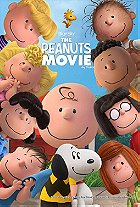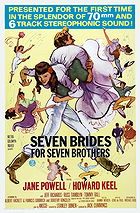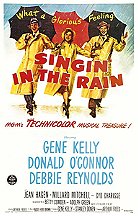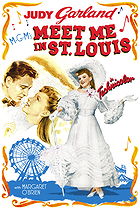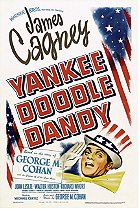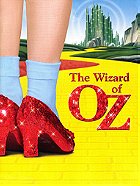Robert Wise was already a major industry veteran by the time West Side Story came around. Beginning his career as Orson Welles’ editor, getting Oscar nominated for Citizen Kane and working closely to create some of those great special effects shots, before transitioning to a director under Val Lewton’s horror unit, Wise was something of a journeyman, but he learned countless, invaluable lessons in working with Welles about creating iconic shots. Known primarily for tougher stories, West Side Story was a departure and perfect fit for his wheelhouse. He handled the dramatics while Jerome Robbins assisted with the musical numbers and choreography.
This is all to say that Robert Wise’s history of tough-guy, street-level stories in films like The Set-Up and Odds Against Tomorrow laid a solid foundation for this gang warfare spin on Romeo and Juliet. Wise’s eye for arresting visuals found a pop-opera structure to support it, and a movie musical has rarely been as expressionistic and bursting with color-coded symbolism as West Side Story.
Describing West Side Story as pop-opera becomes more apt and apparent as the narrative’s emotions and tension rise to ever higher peaks, with characters preferring to express themselves through song-and-dance with only the barest of dialog-only scenes to connect them. Rabid fury dominates the eternal immigrant struggle between the warring street gangs, and the final scenes are a pilling up of bodies and violent explosions that the story had only prior flirted with.
Red is color that looms large over the proceedings, with the Jets and Sharks frequently standing in front of red buildings, or aural notes that feel like miniature explosions of fury. Look no further than the “Dance at the Gym” sequence, which is set against a violently red wall, the simmering tensions between the rival gangs exploding in small outbursts of aggressive dancing.
If red looms large as the symbol of violence and barely contained racial tensions, then purple is vibrancy of life and love, expressed most consistently through Maria’s virginal romance with Tony. In “Somewhere” Maria and Tony hold each other closely while she’s wearing a purple nightgown, proclaiming their love, and she sings about her hopeful plans for the future in front of a purple wall in the “Tonight Quartet.” Even Anita, easily the best part in the entire film, wears purple and frequently admonishes Bernardo for his gang leadership and violence. Or works to help Maria and Tony’s romantic plans dressed in lilacs, walking in Doc’s shop, bathed in red, to plead for peace, and nearly gets raped for all her trouble.
But let’s talk about the central romance in West Side Story for a bit, because it is the most painful and obvious weakness. Not only is the eventual tragedy that calls for a cease-fire between the gangs questionable as drama, but Natalie Wood and Richard Beymer are both hugely miscast as believable romantic partners. The very Russian-doll looking Wood is all wrong with her terrible attempt as a Puerto Rican, though she makes up for this in being deeply committed to her dancing scenes and trying to make it work. The same can’t be said for Beymer, while incredibly handsome is all blandly toothsome, and completely unbelievable as tough Italian hood trying to go straight.
It’s best when watching West Side Story to focus on a trio of fantastic performances, Robbins’ stellar choreography, and the fantastic score. Rita Moreno’s work as Anita deservedly won her an Oscar, one of my all-time favorite performances and Oscar wins. Her teasing, fiery “America” is a show stopper, and she’s even better during the climatic confrontation in Doc’s store, where she twists a message of love into the machinations that will lead us to the grim finale. Meeting her level of performance is George Chakiris as Bernardo, and you’ll find the heat and passion in Chakiris and Moreno where Wood and Beymer deflate as romantic leads. Finally, Russ Tamblyn is all bratty insouciance as the Jets gang leader, leading them through a rousing “Gee, Officer Krupke.”
The strongest argument for West Side Story’s place within the canon rests within Robbins’ choreography and the score, essentially asking why these gangs are dancing and working out from there. The opening introduces the major players, their various fights about territory and place within American society, and find a mode of expression in which snapping and ballet moves begin to look like street fighting. “The Rumble” and “Cool” are the apex of this. “Cool” in particular is fascinating as their tense body language is at constant war with the message of the song.
Written by Leonard Bernstein and Stephen Sondheim, the score for West Side Story is one of the great American songbooks. Not only are classics like “America,” “Cool,” and “Gee, Office Krupke” expressing deeper social problems and character motivations, but they haven’t even taken into account the sweeping romance of “Somewhere” or the confirmation of self-identity in “I Feel Pretty.” Yet still only scratches at the surface, as even the “Prologue,” “Dance at the Gym,” and “Jet Song” have entered the culture in a very deep way. The score for West Side Story is one of the deepest and richest that American theater has produced, and it follows a similar thread through its adaptation into cinema.
An imperfect movie, yes, but still an absolute classic. At least West Side Story does Shakespeare one better by transforming the tragic ending into something far worse. In Romeo and Juliet the lovers both die, but not so here. One of them will have to continue on, having suffered immeasurable losses on the same night. So much of this works so well that we can easily forgive the warping effect that happens when the story pulls focus onto the young lovers. Two-and-a-half hour’s flies by as you watch this solidly made, rough-and-tumble gangland musical.
 Login
Login
 Home
Home 95 Lists
95 Lists 1531 Reviews
1531 Reviews Collections
Collections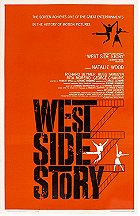
 0 comments,
0 comments, 